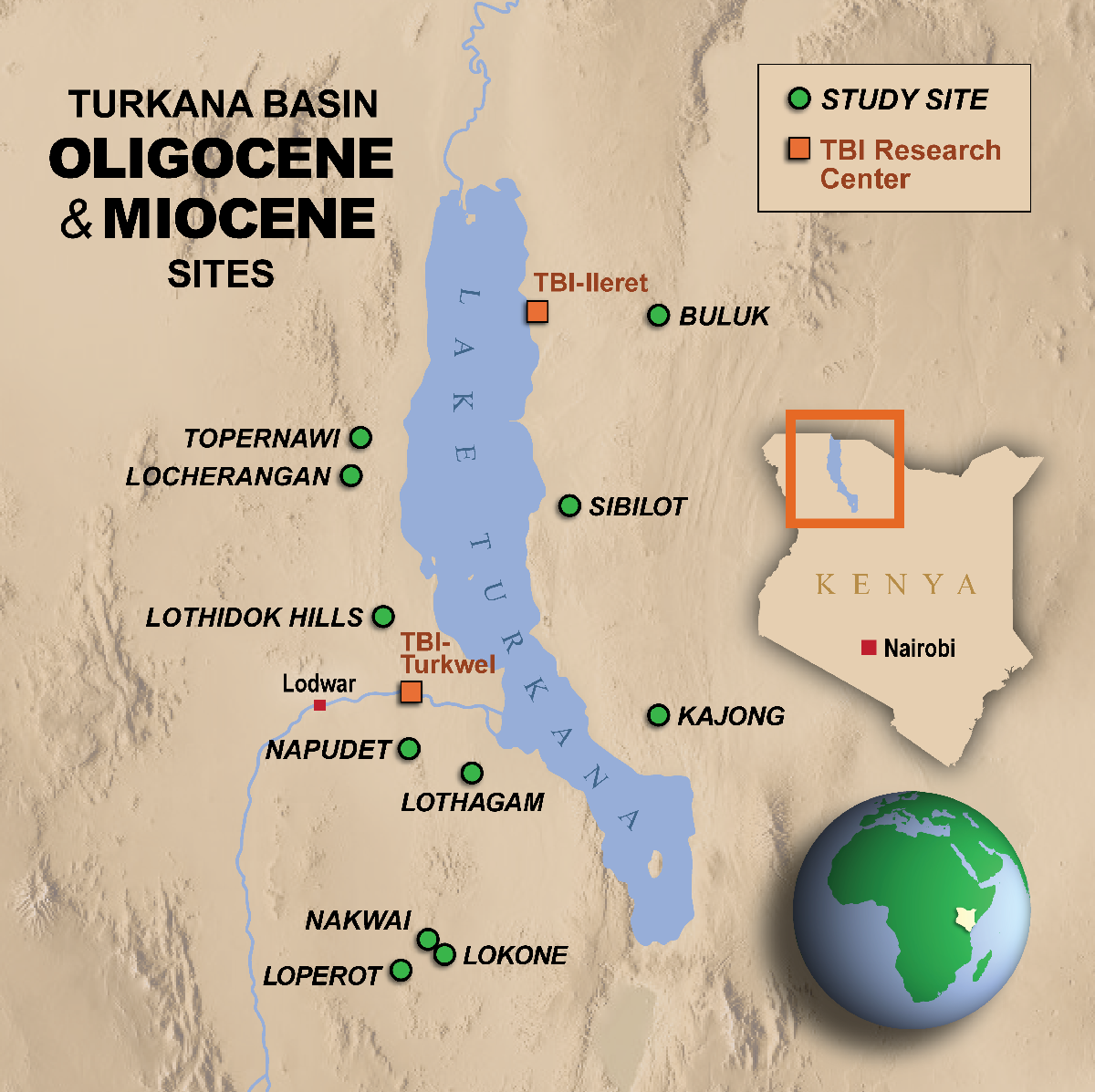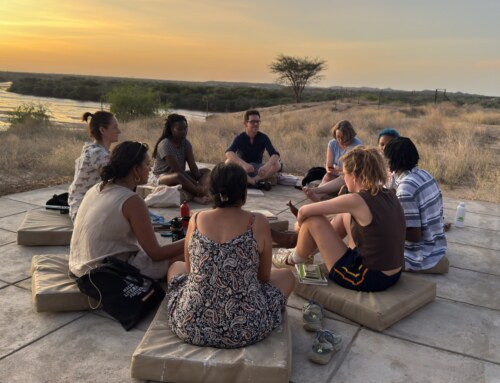
Excavating 16 million year old Buluk bonebed. William Woto, Turkana Basin Institute Technician (front) and Vianna Roland, De Anza College student crew member (back). © Isaiah Nengo.
The NSF Frontier Research in Earth Sciences program (FRES) has funded the Turkana Miocene Project proposal to the tune of ~$2.7 million. The grant will fund research over 4 years to better understand how climate change and tectonics interacted to shape the evolution of the environment in which the ancestors of humans and our closest living relatives, the chimpanzees, gorillas, and orangs emerged in Africa.
It is estimated that the human-chimpanzee common ancestor evolved approximately 6-7 million years ago (mya) and diverged from the common ancestor with the gorilla ancestor about 8-10 mya. Meanwhile, the common ancestor of the African great apes and humans is estimated to have diverged from the ancestor of the orangs approximately 14-18 mya. All these key divergence events would have occurred in the time period known as the Miocene which lasted from about 23 to 5 mya in the geological time scale. These major events in human and ape evolution are thought to have occurred in Africa.
A longstanding question at the intersection of Earth and Life sciences is what roles, if any, do climate and tectonics play in the evolution of life? The East African Rift is among the best places to study the influences of Earth processes on the evolution of mammals. Here, uniquely, the region’s geologic and climate histories, including the formation of the rift system that is the cradle of humankind, are preserved in sedimentary rocks. The team will investigate these sediments, and the fossils they contain, to gain insight into ancient climate and habitats that record the emergence of humans, their primate ancestors, and African mammals over the last 25 million years.

Map of Africa and Kenya, showing the location of Miocene sites in the Turkana basin under study.
The research will explore relationships between tectonics, climate, and mammal evolution in the Turkana Basin, Kenya using integrated field, laboratory, and modeling studies. New and existing data will be combined to study the links between rift development, climate change, and their respective roles in vegetation and mammal evolution. The team will produce a tectonic model that reconstructs rift evolution in this region of East Africa for the past 25 million years, and the tectonic model will be integrated with climate-vegetation models of equal or better resolution. Independent geological, geochemical, paleoecological, and paleontological data will be used to validate these model outputs to distinguish the influences of tectonics and climate on the evolution of Turkana ecosystems and mammals.
The project collaboration is multidisciplinary and multinational. The expertise of the team members includes tectonics, sedimentology, geochronology, isotope geochemistry, paleoecology, climate modeling, and paleontology. The project will be based out of five core US institutions: Stony Brook University, Rutgers University, Hamilton College (a primarily undergraduate institution; PUI), the University of Michigan, and the Lamont-Doherty Earth Observatory of Columbia University (Lamont). International collaborators include team members based at the National Museums of Kenya, Kenya and University of Helsinki, Finland.
The project will provide funding for students and extensive fieldwork that will provide training for a cohort of students and postdocs at SBU, Lamont, Rutgers, Michigan, and Hamilton College.
The project involves five existing IDPAS members. Isaiah Nengo is the overall PI for the project with Greg Henkes and Bill Holt (Geosciences) as co-investigators at SBU; Kevin Uno as co-I at Columbia; Craig Feibel as co-I at Rutgers; Cat Beck as co-I at Hamilton College and Chris Paulsen as co-I at Michigan. As well as Isaiah and Greg, IDPAS faculty members Troy Rasbury (Geosciences)and Gabrielle Russo (Anthropology), and Tara Smiley (Ecology and Evolution) the new Presidential TBI hire in Ecology & Evolution. Stony Brook University is the lead institution.





